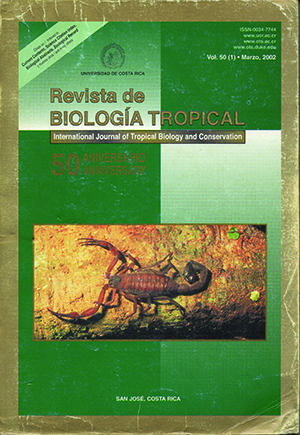Abstract
Nests of Sceliphron fistularium were obtained in Colombia and Moji Guaçu, São Paulo, Brazil. Complete nests consisted of 1 to 54 sausage-shaped cells, arranged side by side along a horizontal axis, and found attached to electrical wires (Colombia, n = 7) and walls (Colombia, n = 4 and Moji Guaçu, n = 4). The number of cells per nest ranged from 1 to 54, their length varying from 20.8 to 29.7 mm, and their diameter from 7.6 to 11.7 mm. Brood cells were provisioned with spiders of the family Araneidae. Only Alpaida veniliae was collected in Colombia, whereas the most frequent species found in Moji Guaçu was Micrathena swainsoni (62.0%) followed by M. acuta (23.3%). Adults emerged from June to October. The length and diameter of female and male cells were similar. Nevertheless, females were significantly larger than males. The sex ratio of individuals obtained from nests was 1.16 females : 1 male. A life table was constructed, and details of the life cycle of the wasps and parasitoids are presented. The most common mortality factors were either unknown or due to the parasitoid wasp Melittobia sp.##plugins.facebook.comentarios##

This work is licensed under a Creative Commons Attribution 4.0 International License.
Copyright (c) 2002 Revista de Biología Tropical
Downloads
Download data is not yet available.


